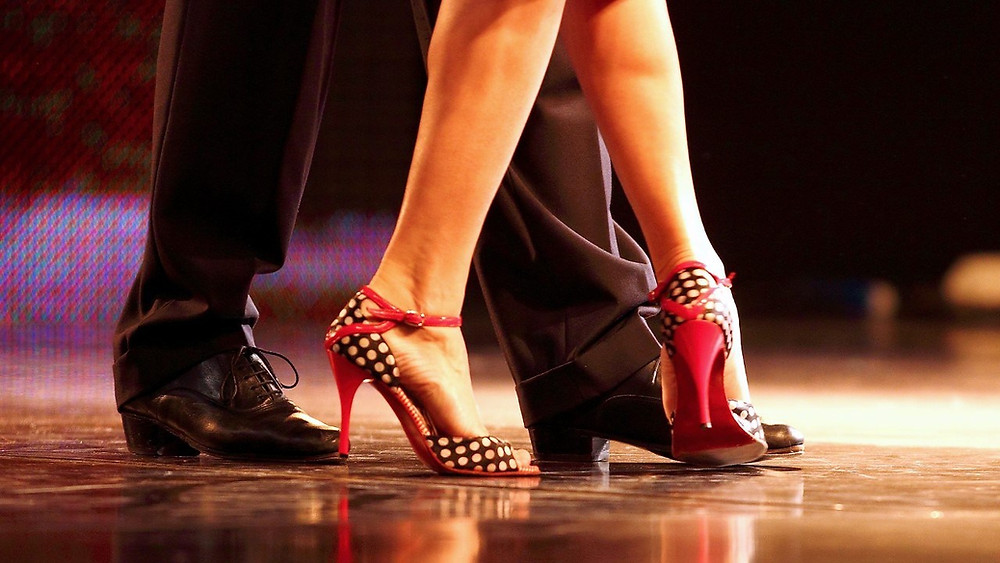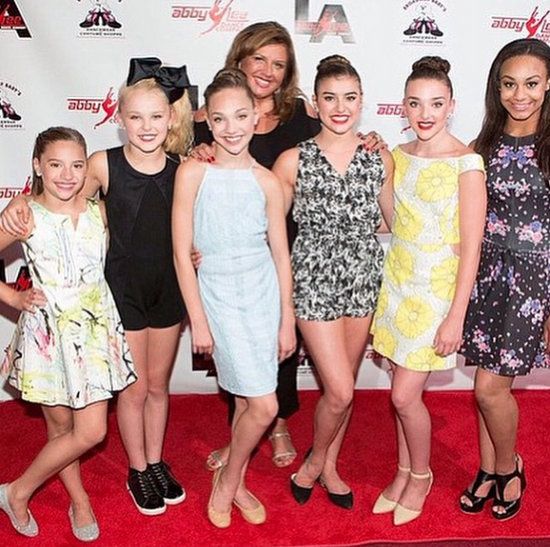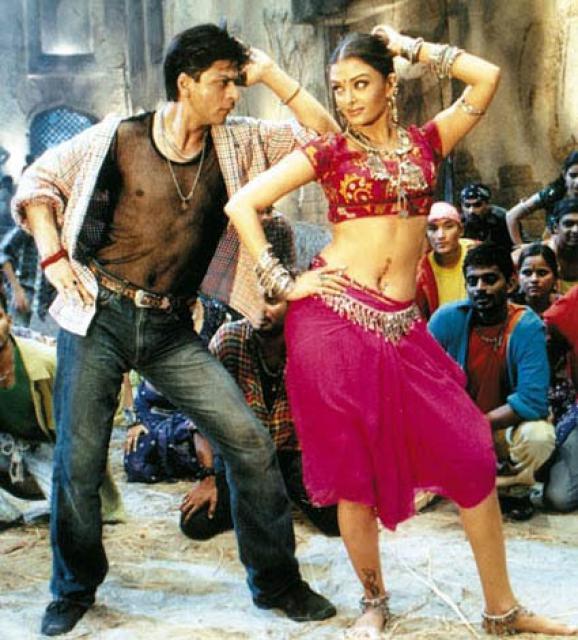How to clean ballroom dance shoes
How To Care For Your Latin Dancing Shoes
It’s worth taking care of your latin dancing shoes – the most important tool for a dancer (besides your body)!
Did you know that latin dancing shoes support your body while you’re swinging those hips and sashaying away? They’re designed to withstand pressure and provide flexibility, so you can nail the twists and turns that come with the territory, without hurting yourself.
Everyday shoes don’t come close, especially if you plan on being a regular on the dance floor. It’s worth investing in a specialised pair that enables the best technique.
But this doesn’t let you off the hook completely. You need to take care of your latin dancing shoes, to get the most value out of them.
This includes following the correct protocols for:
Storage
Cleaning
Polish
Repair
Wear your latin dancing shoes with care
It’s important for your chosen pair to fit as perfectly as Cinderella’s glass slippers. As obvious as this seems, you don’t want your feet sliding inside the shoe. Don’t be too hasty when getting ready – take time to fasten your buckles (women) and tie your laces tightly (men).
Be gentle when you put on and remove your latin dancing shoes. Only wear them in the dance studio, and not elsewhere, since the coarse ground can damage the soles. Suede leather in particular can’t withstand dirt, moisture and rough floors, so never wear this style outdoors.
It’s worth buying another pair of dance shoes to switch between, if you can afford it. Not only does this give each pair a break, but different shoes work different muscles.
Finally, a good heel protector can act as a saviour. These slip onto your heel to guard against the wear and tear that comes with frequent use.
Storage matters: Don’t throw your latin dancing shoes into a plastic bag
It’s tempting to throw your latin dancing shoes into a bag, stashed out of sight, after a tiring session. This is one of the worst things you can do. Plastic will cause your shoes to sweat, decay and stink. The same applies to all bags made from non-breathable fibres or fabric. Boxes are a no-go as well, since they create a damp environment.
This is one of the worst things you can do. Plastic will cause your shoes to sweat, decay and stink. The same applies to all bags made from non-breathable fibres or fabric. Boxes are a no-go as well, since they create a damp environment.
It’s best to store your shoes in a dry location and leave them out overnight to air out. This is a good way to keep bacteria at bay.
Filling your shoes with newspaper will help to draw out moisture, if they’re really wet. Never use a hair dryer or heater to dry your leather shoes, since heat is damaging.
Cleaning your latin dancing shoes
If your shoes are made out of canvas, you may be able to get away with throwing them in the washer. Stay away from the dryer though, as this leads to shrinkage.
Other materials don’t fare so well in the washing machine, so you have to get creative.
You can use a damp cloth to clean leather dance shoes. Once completely dry, a small amount of wax or cream polish will preserve the leather.
Never use regular polish, if you have patent leather shoes. Instead, apply patent dressing when dry (after cleaning with a damp cloth). You can also use a soft cloth to add shine.
A clean toothbrush can remove dirt from suede dance shoes (brush from front to back). A suede treatment solution helps remove stains, but make sure the shoes dry completely before wearing them.
Shoes that feature suede soles should be cleaned using a suede shoe brush. If there’s dirt stuck on the soles, brush from toe to heel. This also adds traction, if the soles have become too flat or smooth. Brush carefully and keep your fingers out of the way, especially if the bristles are hard.
Satin dance shoes require a particularly gentle approach, since they’re quite delicate.
Start by using a soft bristle brush to remove dirt.
Blot stains with a dampened cloth (cold water), from the top of the shoe to the bottom of the shoe.
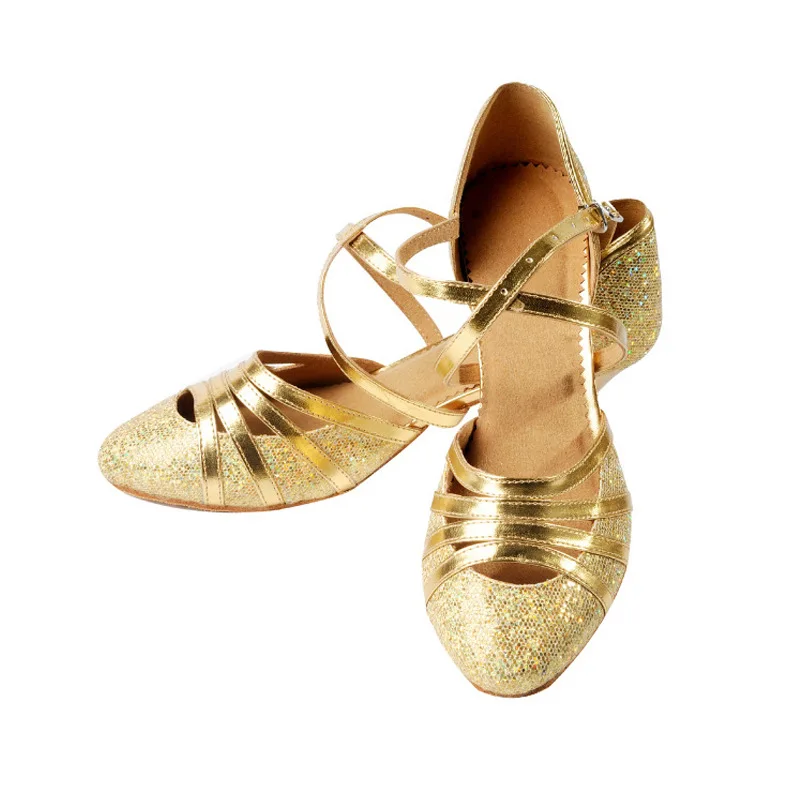
Dab stubborn stains with a damp soapy cloth (hand washing liquid).
Rinse the shoe straight away by patting with a clean damp cloth.
Pat your shoe with a hand towel to dry it. Do not rub the fabric, since this creates stains.
Get the most wear out of your shoes
If you look after your latin dancing shoes, they’ll look after you by supporting your feet. When it comes to improving your technique, leave that to our instructors!
Get in touch today and trial a free dance class with the team at Arthur Murray Crows Nest and don’t let those shoes go to waste!
Shoe Care & Maintenance – Ballroom Connection
Dance Shoe Care and MaintenanceRemember that our ballroom dance shoes are equipment. It’s essential to take good care of them so they can last longer and perform well. Suede sole ballroom shoes are meant for just that—ballroom dancing! So we want to keep them indoors on a clean, well-kept ballroom floor.
Surfaces that are okay for dance shoes:
- Hardwood floors (the ideal dance floor)
- Most non-abrasive, indoor surfaces are fine to walk over and won’t damage the shoes:
– Carpeting
– Vinyl
– Tile
Recommended to avoid:
- Any outdoor surfaces, including but not limited to:
– Sidewalks
– Any pavement
– Dirt and grass
– Gravel - Water or moisture of any kind (this will alter the texture of the suede)
Many ballroom shoe brands will provide a shoe bag with the shoes. Please take care to use them to carry your dance shoes around in. They are not meant for and should not be worn outdoors for any reason. Even a short walk from your car to the studio is not recommended if you hope to keep your shoes lasting as long as they can.
Brushing Your Dance Shoes
The most important thing for a dancer to do for their ballroom shoes is to brush the suede soles on a regular basis.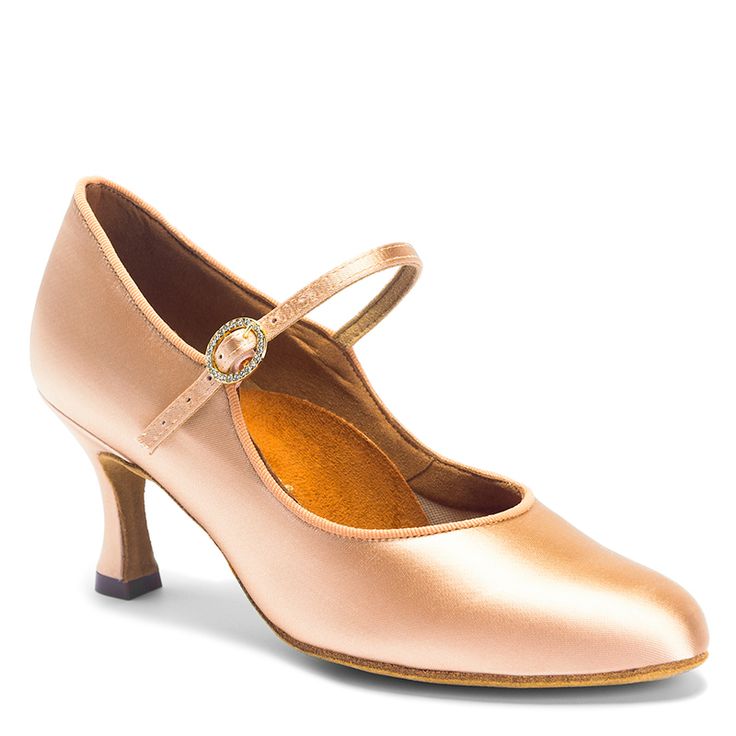 The suede will collect dirt and wax from the dance floor over time and get matted down. This causes the suede to lose its nappy texture and get slippery.
The suede will collect dirt and wax from the dance floor over time and get matted down. This causes the suede to lose its nappy texture and get slippery.
For safety reasons and for prolonging the lifetime of the suede soles, they should be brushed with a metal bristle Shoe Brush on a regular basis. These shoe brushes differ from other shoe care brushes, made specifically for cleaning the soles of ballroom shoes.
How often should I brush my dance shoes?
The suede soles on ballroom shoes won’t need to be brushed after every use, but it’s important to pay attention to the traction you feel when dancing. If they start to feel more slippery, giving you less control than usual, it’s time to give them a brushing!
For reference, a dancer who practices vigorously 3-4 times a week for several hours each session may need to brush them every week or so. A more casual dancer who might take a group class once or twice a week may not need to brush them as often and can go longer without needing to brush them.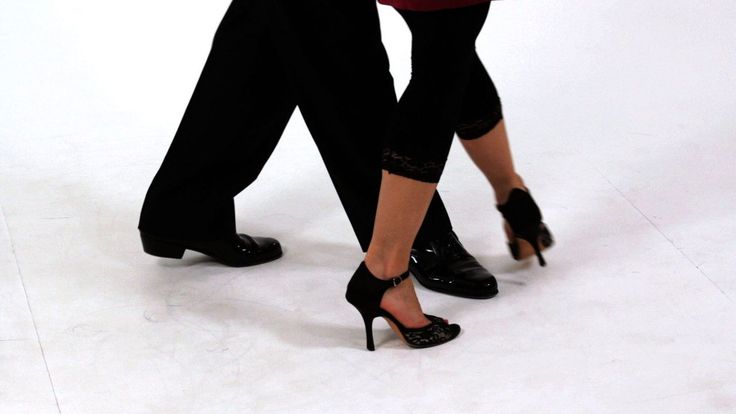
Excessive brushing will also be bad for the suede soles, since the bristle will start to take off good suede fibers, so be mindful of that!
Is there a method to brushing shoes correctly?
If you’re on top of maintaining your suede soles, a gentle brushing should do the trick. If the suede has been neglected for longer periods of time, you may need to brush them more firmly to remove the build-up.
There is no specific direction to brush along the suede, but the brush will work most effectively if you brush against the bristles (the metal bristles will usually be angled downward.)
Don’t worry if you see dust and residue flaking off from the suede! That’s the dirt, dust, and old suede fibers getting removed, which is what the brushes should be doing. To keep tidy, it’s a good idea to brush your shoes over a waste bin.
The idea is to revive the nappy, hairy texture of the suede, which is what will “grab” the floor when you dance.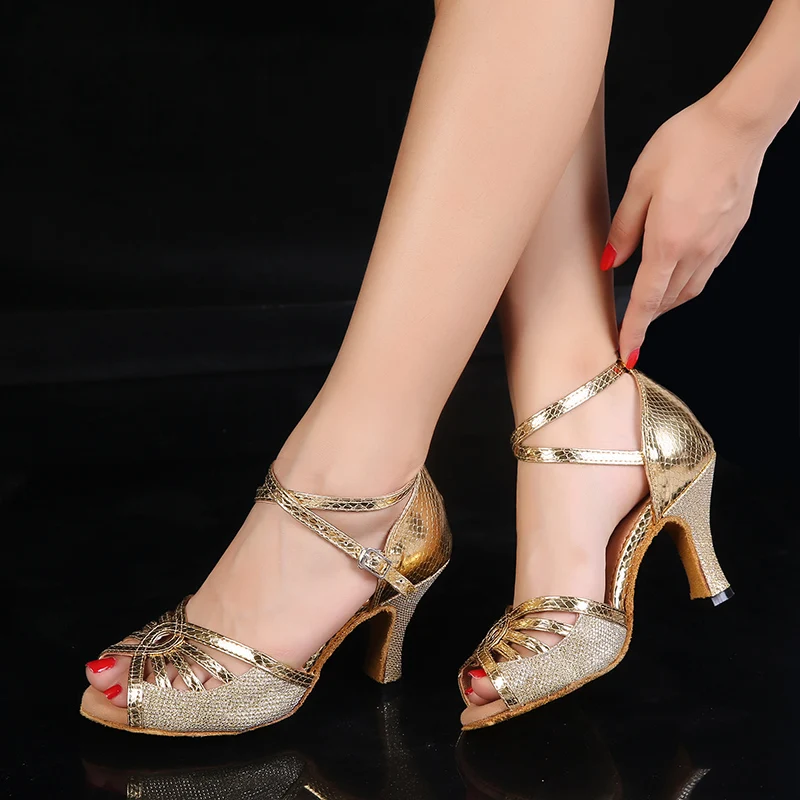 The more flattened down the suede is, the less traction you will have. The more textured it is, the more traction you will have.
The more flattened down the suede is, the less traction you will have. The more textured it is, the more traction you will have.
What should I do if brushing doesn't seem to help the suede traction anymore?
That sounds like it’s time to have the shoes resoled, then. The suede soles won’t last forever, and if the ballroom shoes still fit you well, it’s not necessary to replace them with a whole new pair. The suede can be resoled with a new layer using Replacement Suede Soles and the correct Suede Sole Adhesive.
This is a DIY project anyone can do at home, but if you’re not comfortable with resoling the shoes yourself, any local shoe repair shop should be able to do the job for you.
Tips On Caring Uppers of Shoes
Ballroom shoes come in all forms and materials, which might make taking good care of their appearances a bit tricky. One thing dancers must remember is that our dance shoes are first and foremost our equipment, which will inevitably show wear and tear over time. The kind of damage and wearing we see on our shoes are also a great indicator of how we dance, and may even be itself a good learning tool.
The kind of damage and wearing we see on our shoes are also a great indicator of how we dance, and may even be itself a good learning tool.
For example–we may see uneven wearing on our heels, which is a great indicator of how we use our feet, how much and where we put our foot pressure, the tracking and directionality of our steps in our figures, etc.
–we may see certain spots on our shoes wear out much faster than others, such as the inside edge of the heel cups, or the inside edge of the front of the shoes. This shows us where the most contact and friction is taking place as we dance our figures.
Whatever the case, we all do our best to take good care of our shoes so they can last as long as they can. With different finishes and materials our dance shoes come in, there are a variety of tips and tricks for how we can care for them.
Satin and Other Textile Material Shoes
Satin and other fabric materials may be some of the trickiest to care for due to their delicate nature.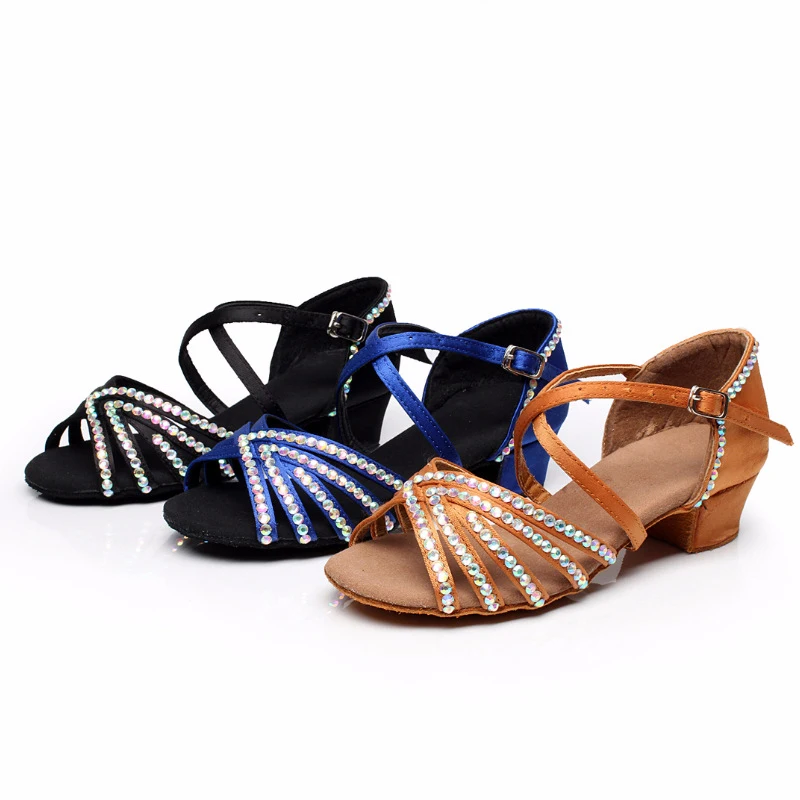 They are among the most common looks for ballroom shoes since they show quite well and elegantly on the competition floor.
They are among the most common looks for ballroom shoes since they show quite well and elegantly on the competition floor.
Due to the nature of all satin material, please be aware that it is inevitable for them to get dirtied over time. With all the contact we make on the floor, with our own feet, or anything else our shoes may brush up against, satin will track dust over time. It is suggested to coat satin or any fabric material dance shoes with products like Scotch Guard, which can help protect and ward off the dust and dirt a bit better. It will not completely prevent dust from showing, but it will help guard it and make spot cleaning a bit easier.
We can carefully spot clean dust marks. With a gentle soap and water and a towel, we can moisten and lift away dirt marks very carefully to help lighten them on the satin. It is not advised to use any scrubbing or rubbing motions as this will irritate the weave of the satin and cause it to pill and lose its sheen! There are also many online tutorials on how to care for different types of shoe materials one can reference. However, please be mindful of all the details and information given and use your best judgement!
However, please be mindful of all the details and information given and use your best judgement!
**PLEASE NOTE: It’s highly advised to practice in inconspicuous spots first to see results! Please be aware that due to the differences in grade and quality of different types of satins and textiles used among different brands, one method may not necessarily work for all types of materials! Please use caution and care when trying to spot clean your shoes.
Suede and Nubuck Shoes
Suede shoes are quite common even among street shoes. The upside to this is there are also many products out there that are made to care for suede uppers. Suede dance shoes can be cared for just as regular shoes with suede uppers. The same types of sprays and brushes can be used to clean and maintain suede and nubuck dance shoes.
Whichever product you choose to use, please be sure to read the directions of the product carefully!
Leather and Patent Leather Shoes
Leather is among the most common material used in ballroom dance shoes, especially in men’s styles.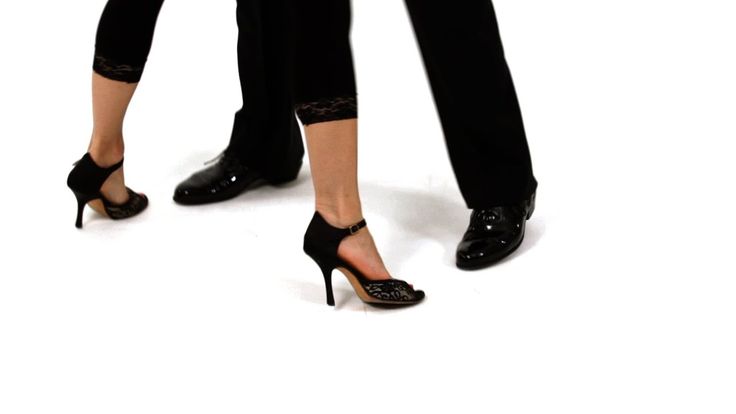 Leather can be polished and buffed just like regular street shoes. The same array of products on the market for leather shoes can also be used for your dance shoes.
Leather can be polished and buffed just like regular street shoes. The same array of products on the market for leather shoes can also be used for your dance shoes.
Patent leather requires slightly more attention. It can be shined like regular dress shoes with the proper polish. We also suggest a light coat of petroleum jelly (the same kind like Vaseline, used for our lips) to cover large surfaces of patent leather on your dance shoes. Patent leather often has more friction and can “stick” to itself, which might hinder our dancing. The petroleum jelly not only helps reduce the friction, but it also helps condition the material to help against cracking over time.
Heel Protectors
Heel protectors or heel caps are commonly worn on women’s heeled shoes. They primarily serve to protect the plastic heel tips from wearing down. Some prefer the convenience of replacing and discarding heel protectors over taking the shoes to a cobbler to have the plastic tips repaired.
If you choose to wear heel protectors, please be sure to find the correct size for the correct heel! The various heels often vary minimally between brands, and there are many different heel shapes, like “Flared” or “Slim”. Certain heel styles also do not have standard heel protectors made for them. Typically, the larger types of heels may not have protectors, since it’s preferred by the manufacturers to place suede on the surface area of such heels instead.
Some heel protectors come with built-in suede. The built-in suede offers an added layer of protection, helping them last longer than plain ones. The suede also helps with the traction on the heels while dancing. Consider your own dancing, choreography, and style when choosing whether or not, or what type of heel protector to wear.
Tips for putting on the heel protectors–
- Heat is your best friend! Warming up the heel protectors with your breath or your hands, or with the help of a hair dryer will soften the plastic.

- Use your fingers to stretch the opening of the protectors as best as you can.
- First work the rounded end of the protector over the heel, then wiggle it over the tip until the two corners slip inside the cap.
- Press the heel flat the rest of the way into the heel protector against a hard surface. You’re done!
Once placed onto the heel, protectors are to stay on until they are worn through. The best way to remove them is to nick a corner of the heel protector and simply slip the cap off. It is not recommended to forcibly pull the cap off, as it may loosen or even pull off the entire plastic heel tip of the shoe!
How to care for ballroom dancing shoes?
1. Dry your shoes after class or competition. Proper drying of shoes after a workout is a very important part of taking care of dance shoes to keep them in good condition. Take your shoes out of the bag as soon as you get home.
Wet shoes dry only at room temperature, and it is advisable to insert a stretcher into it or stuff it tightly with newspaper, napkins or crumpled paper (which must be changed periodically).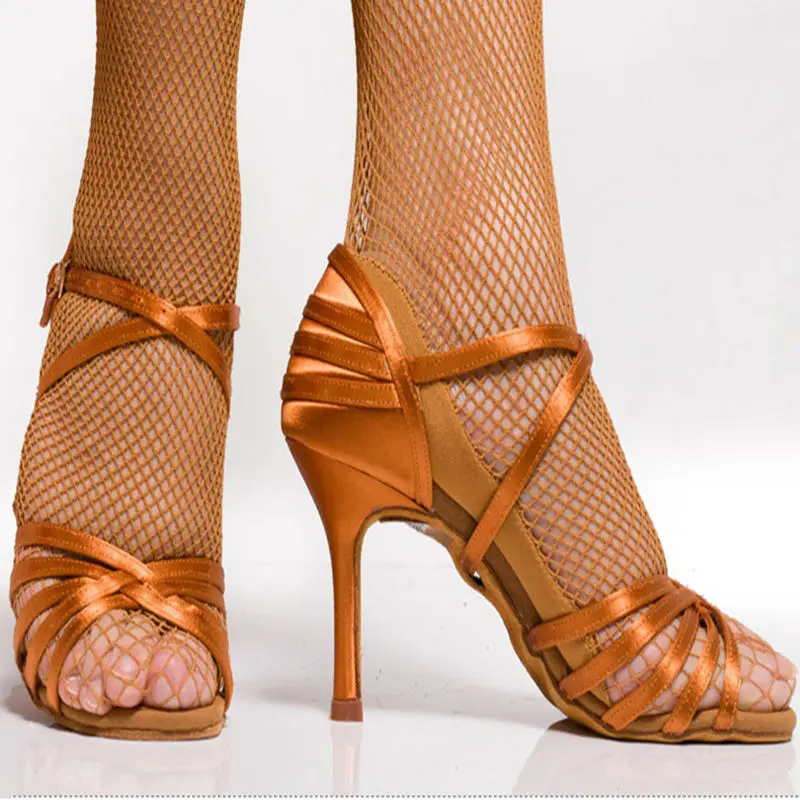 Ballroom dance shoes can only be cleaned with special shoe care products, today such products are sold in almost any store.
Ballroom dance shoes can only be cleaned with special shoe care products, today such products are sold in almost any store.
Do not dry ballroom dance shoes near a radiator or any other source of heat! From this, the material may crack or even sit down!
If the shoes do shrink, use a shoe stretcher.
2. It is not recommended to “wash” shoes.
3. For transportation, manufacturers put special bags in boxes with shoes, there are special bags for shoes, you should not wear ballroom dancing shoes in plastic bags, shoes do not “breathe” in these bags.
The care of ballroom dance shoes depends on the materials used to make the shoes.
Satin ballroom shoes can be cleaned at home with a special shoe cleaner available from almost any dance store. It is necessary to strictly adhere to the instructions, and then your shoes will keep a presentable look longer. You can not rub such shoes with a brush or try to wash them with plain water - this will lead to thinning of the fibers of the fabric, and to the formation of ugly spools.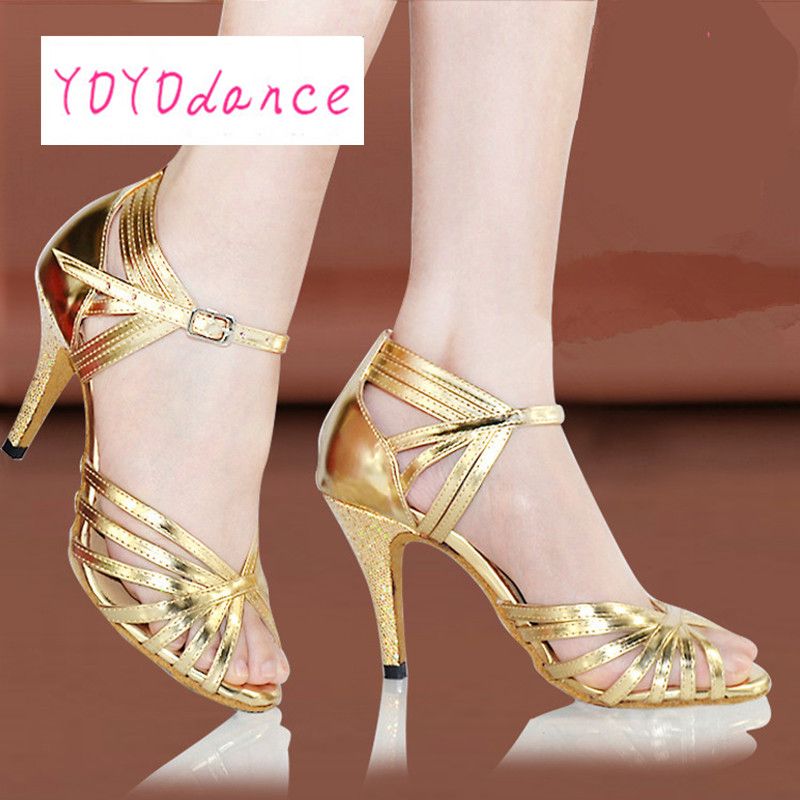 You need to pay attention to the seams and fasteners. Places where the fabric can fray can be lubricated with natural oil.
You need to pay attention to the seams and fasteners. Places where the fabric can fray can be lubricated with natural oil.
4. Recently, it has become popular again to dye shoes in the color of a suit - this can be done both in the salon and on your own, choosing the right tone.
5. Many people stick rhinestones on their ballroom dance shoes, for this you need to use the same glue that is used to decorate the competition dress. For the period of gluing and drying, it is recommended to insert a special spacer into the shoes and fill them with paper. It is not recommended to wear shoes glued with rhinestones or decorated with laces for training, because. from frequent rubbing of shoes against each other, the stones will be slightly erased and lose their original luster.
6. Genuine leather shoes are easy to care for. You can clean it with a damp cloth or sponge. There are specialized tools, but since. they are created primarily for street shoes, sometimes it is worth treating ballroom dance shoes with natural ones, for example, beeswax.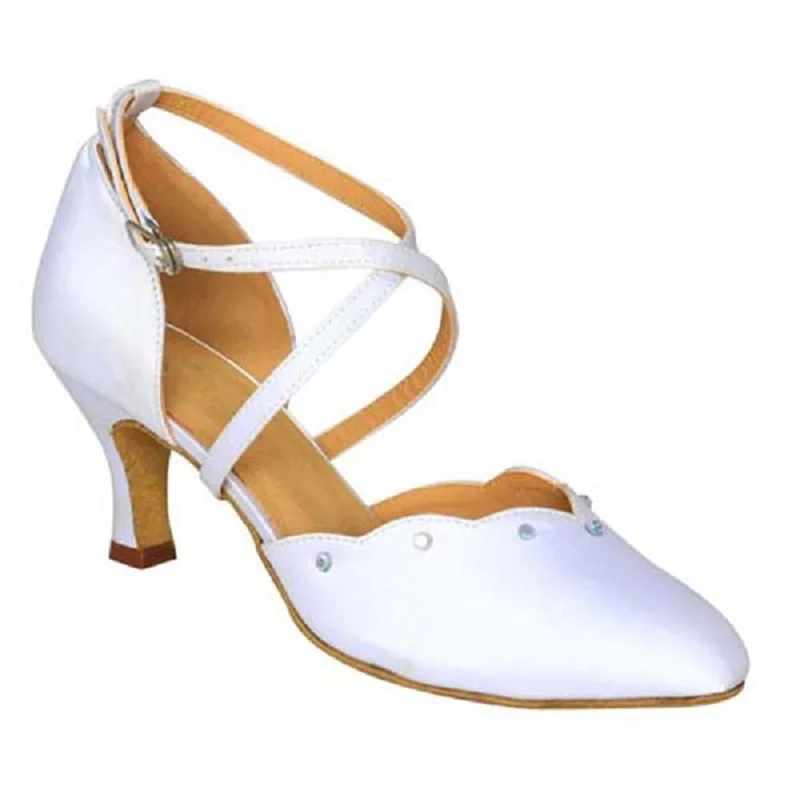 To give shoes made of genuine leather shine, you can use a special polish sold in ordinary shoe stores.
To give shoes made of genuine leather shine, you can use a special polish sold in ordinary shoe stores.
7. Keeping track of men's suede and nubuck ballroom shoes is a little trickier. Do not use water to clean these shoes, water will promote the formation of new stains! Suede and nubuck are dry cleaned. Before the main cleaning, it is necessary to treat the shoes with a special brush with rubber. But you can also use the "grandmother's" method - an eraser and toothpowder! In order for shoes made of nubuck and suede to last longer, you need to stock up on special care products for such shoes and special impregnation.
8. Lacquered ballroom dance shoes should be handled with care, even the smallest scratch will be visible on the lacquered surface! It is not necessary to clean new patent leather shoes - just wipe them with a flannel cloth. At the moment when the need arises for cleaning, it is best to use a soft sponge and soapy water, or use special products: shoe oils and balms.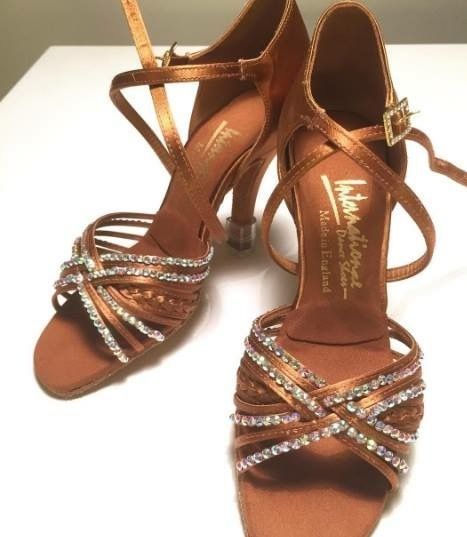 To remove stains, you can use nail polish remover without acetone.
To remove stains, you can use nail polish remover without acetone.
Never use a brush to care for patent leather shoes! You can get rid of dull spots that sometimes appear on patent leather shoes by rubbing these spots with a cut onion or egg white. Patent shoes should not be kept near sources of heat and moisture. Otherwise, it may even become moldy! If suddenly your shoes are covered with mold, then carefully remove it and grease the surface with glycerin. Leave the glycerin on for 10 minutes, then remove it with a cloth.
Partners often complain that at the beginning of wearing patent leather shoes cling to each other and lose their presentable appearance. To solve this problem, there is a special tool that can be bought at the time of purchase of new shoes.
9. A very important part of ballroom dance shoe care is sole care. The sole is made of specially dressed leather, suede and has small villi. Your stability depends on the state of the sole - sliding on the parquet.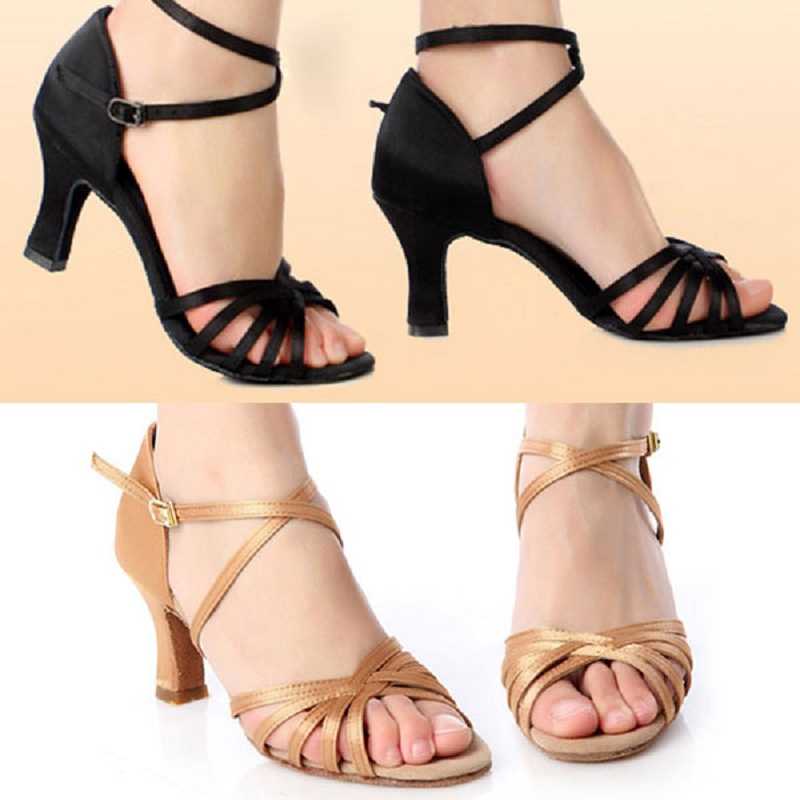 Optimum adhesion to parquet is 70% dependent on the condition of your soles, the remaining 30% depends on the quality of the parquet.
Optimum adhesion to parquet is 70% dependent on the condition of your soles, the remaining 30% depends on the quality of the parquet.
The soles of ballroom dance shoes should be cleaned with a special brush before each practice session or any time on the floor, and once or twice during practice. For easier cleaning of the brush itself, it is recommended to put an old nylon stocking on it before use, which is removed after cleaning. The brush will be like new.
Almost all dancers wet the soles of their shoes with water, but this causes them to deteriorate rather quickly. If you have ever used this method, you will have to resort to it constantly. It is better to use castor oil for the same purposes.
Some dancers spray their soles with hairspray, this may work for a short time but after the hairspray dries it gets worse. After that, it is almost impossible to clean the sole from the varnish.
10. There is a universal cleaner that is well known to motorists - this is the WD-40 fluid displacer.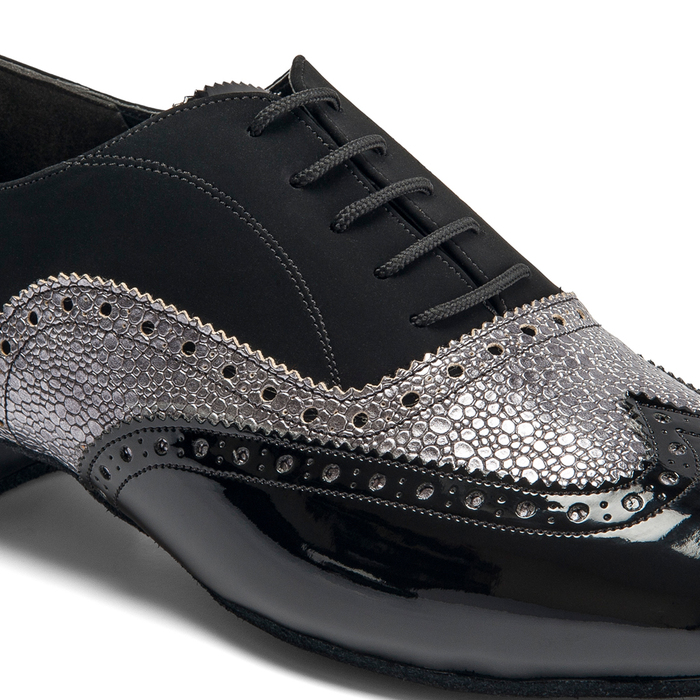 This tool will help clean the paraffin sole, from fat and disinfect it. But often you should not use this tool either, because. completely fat-free skin is also bad. Recently, a special powder has appeared on sale to help achieve the necessary slip on the parquet.
This tool will help clean the paraffin sole, from fat and disinfect it. But often you should not use this tool either, because. completely fat-free skin is also bad. Recently, a special powder has appeared on sale to help achieve the necessary slip on the parquet.
11. Change of heel heels - concerns mainly partners. It is better to purchase a spare pair of heels at the time of buying new shoes. Heels should be changed, not allowing them to wear out too much. Changing heels is a very simple action that anyone who has used a hammer at least once in their life can do. In order to replace the old heel, you need to fix it with pliers and pull it out. Then insert a new one so that the metal pin that is on the heel goes deep into the heel in the right direction, then drive the heel inside with a hammer.
First of all, it is necessary to take care not of shoes, but of your own skin of legs and feet. It is necessary to take care of the feet, and recently appeared, special orthopedic insoles, invented specifically for ballroom dancing, will help to keep the shape of the feet as long as possible. A special powder, also designed specifically for dancers, will kill bacteria that spread infection and odors and help prevent excessive perspiration.
A special powder, also designed specifically for dancers, will kill bacteria that spread infection and odors and help prevent excessive perspiration.
Insole care0048
Most insoles are made of artificial materials, but there are also insoles made of real leather, for example, Dance naturals (DN) uses only natural leather. It cannot be unequivocally said that one is better than the other. Artificial materials are easier to care for (which many ignore), genuine leather is, of course, comfort, but caring for it requires a special approach. And it is highly recommended to use a powder that kills bacteria. If the insole is not taken care of, it will get wet from aggressive sweat, become a breeding ground for bacteria, and, ultimately, this can lead to the loss of the internal shape of the shoe. It is very important that there is a certain adhesion between the soles of the feet and the insoles (not the sticking of a dirty and wet insole to the foot, but the adhesion).
Some manufacturers of ballroom dance shoes use a cushioning system - a special spring mechanism. There are several important points that tell us how the shoe manufacturers thought about dancers:
Shoe shape
If ballroom dancing shoes don't support the arch of the foot, these shoes are not suitable for dancers.
If the shape of the last leads to flat feet (which almost all manufacturers have!), then the rest of the care for the feet goes into second place.
Sole - see item no. 9
Note 1: Heel pads are a separate issue. Recently, different types of headbands have been used in terms of material, shape (different shape of the neck of the headband, different base), in addition, the use of different colors, effects (for example, with deodorant, with the addition of phosphorus, etc.) . All this is a separate topic for discussion.
Note 2: Today, various anti-slip powders such as anti-handle and anti-slip of German production are on sale.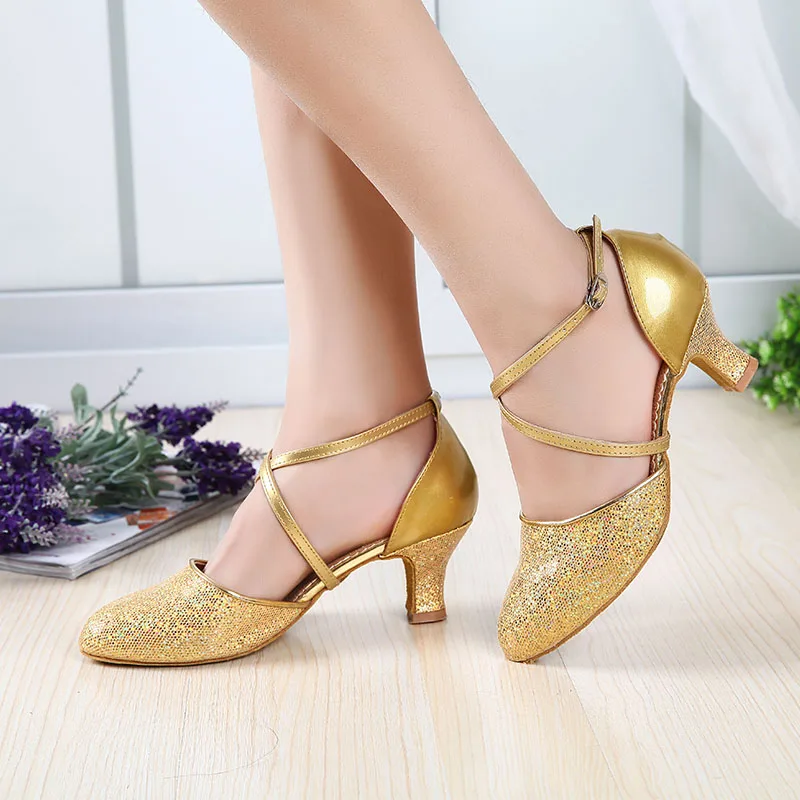 Discussion of the use of these powders is also a separate topic.
Discussion of the use of these powders is also a separate topic.
How long one pair of ballroom dancing shoes can be used
Many factors affect this, first of all, the duration of training, the shape of the foot, proper shoe care ... All this is very individual. And, of course, it depends on how many couples you have and how often you practice. For example, couples sponsored by English firms are given an average of five to six pairs of shoes per year for each athlete. The lifespan of shoes for intensive training and competitions ranges from 2-3 months on average. From a hygiene point of view, it is also recommended to change shoes every 3 months. With proper operation and good care, this figure can be increased up to one year. Well, from experience, the right approach, for example, to men's ballroom dancing shoes (the right choice of manufacturer, the right choice of model and size, and, of course, the right shoe care) allows shoes to serve for several years. Women's shoes serve, of course, less. But with the right approach to choosing ballroom dance shoes and with proper care for them, they can last several seasons.
Women's shoes serve, of course, less. But with the right approach to choosing ballroom dance shoes and with proper care for them, they can last several seasons.
The durability of ballroom dancing shoes, besides their care, is also affected by other factors: high-quality and accurate lasts, the raw materials from which the shoes are made, professional assembly on high-precision equipment, and many other points.
It is not recommended to buy ballroom dance shoes for children "for growth", this leads to rapid wear.
An additional note on the durability of ballroom shoes - shoes with stitched soles will last longer.
Dance shoes are guaranteed for 30 days. To avoid unpleasant situations, it is worth taking a spare pair with you to tournaments. Yes, just in case.
Source: orpheusmusic.ru
How to clean ballroom shoes | Encyclopedia of shoes
Denis Skoryatin 0 Comments ballroom, soap solution, natural leather, natural materials, unpleasant smell, first of all, clean, do, washing machine, warm water
How to properly handle ballroom dancing shoes is selected, and you have already worked out in it, took part in competitions - you should think about caring for it.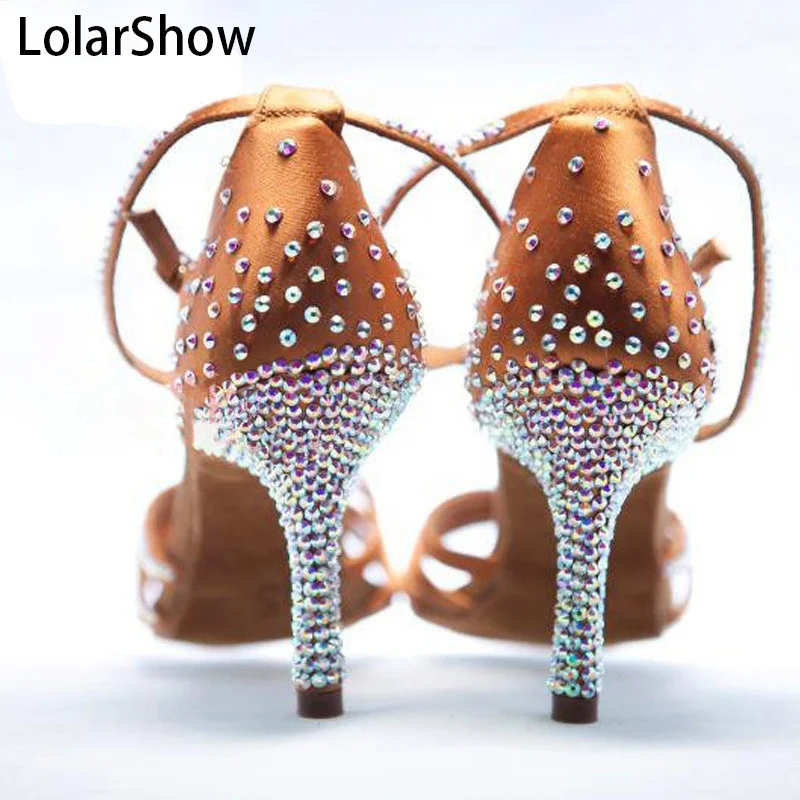 It doesn't matter if you buy dance shoes every month or two, or wear them for years, the simplest hygiene operations simply need to be done with them.
It doesn't matter if you buy dance shoes every month or two, or wear them for years, the simplest hygiene operations simply need to be done with them.
▪ After training or competition ballroom dancing shoes should be allowed to dry. Drying shoes every day is a necessary step in the care of your shoes to keep them in the right shape and condition. You need to get shoes out of the bag-case, immediately upon returning home.
Raw shoes are dried not in heat or cold, but at 18-24 degrees Celsius, while it is advisable to use a special stretch in the middle in the form of a shoe last or stuff it tightly with paper, preferably soft, which needs to be changed from time to time.
Ballroom dance shoes must not be dried near any external heat source (radiator, dryer, gas stove)! From this, the material may crack, warp, lose its original shape!
If your shoes are too small or too small and rub, use a shoe stretcher or put on warm socks soaked in alcohol or vodka and walk around in them for half an hour or an hour.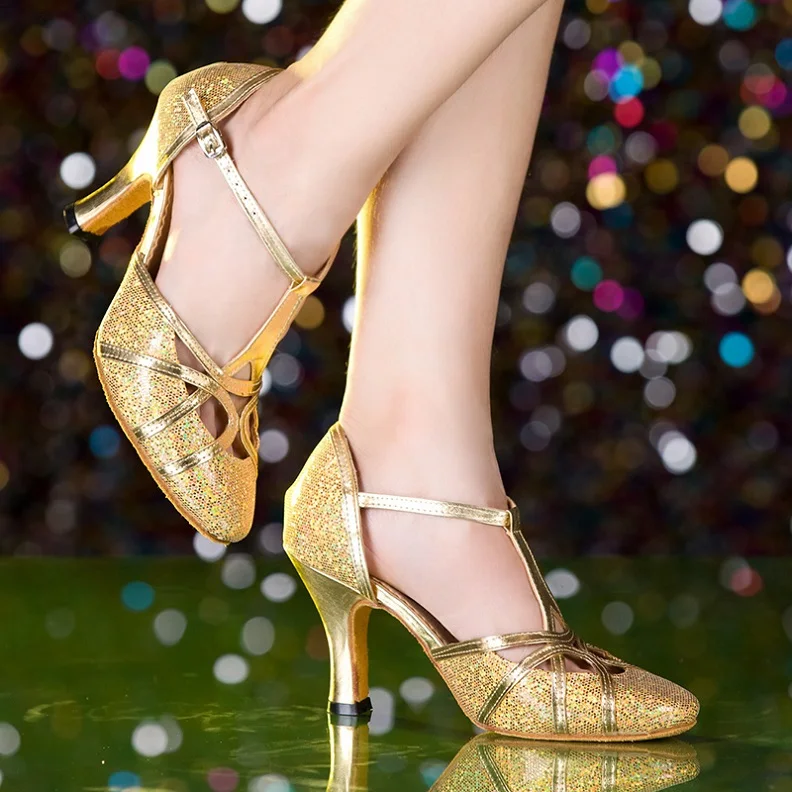
▪ It is best not to “wash” shoes in the washing machine.
What is more important for you when choosing shoes?
ConvenienceBeauty
▪ To transport shoes, manufacturers or stores sell shoes with special bags, there are also specialized bags for shoes. The main thing is that you can’t use plastic bags to carry shoes, because shoes don’t “breathe” in them, but “wrinkle”.
Care depends on the upper materials used in the manufacture of
— Satin or satin ballroom dance shoes can be cleaned with special cleaning products, which can probably be purchased at every store. It is forbidden to scrub dirt from such shoes with a brush or try to rinse with ordinary clean water - as a result, there will be a thinning of the fabric fibers, streaks and the formation of ugly spools. It is necessary to pay attention to buckles and straps, in these places there is a high probability of tearing and chafing. Therefore, tighten the tails along the course, you do not need to tighten in the opposite direction, so you can easily break the strongest straps.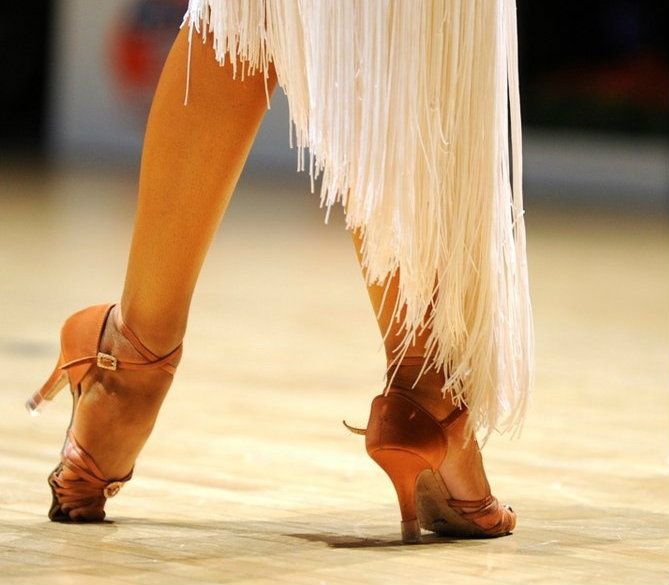 You can smear these places with natural vegetable colorless oil, and be sure to change them to new ones when they are rushed - the newly sewn ones become very rough, thick and very often rub the leg
You can smear these places with natural vegetable colorless oil, and be sure to change them to new ones when they are rushed - the newly sewn ones become very rough, thick and very often rub the leg
▪ In recent years, it has become popular to dye shoes to match the color of the suit. But it is better to immediately order shoes of the color you need, now this service has become more widely used, and manufacturers have a lot of new materials and colors.
▪ Many people glue stones to their ballroom shoes using the same glue you used to glue jewelry to a dress or latin. It is contraindicated to wear shoes with rhinestones or shoes decorated with laces for training, because the stones will slightly rub off from the frequent friction of the shoes against each other, stop shining or even fly off.
▪ It's quite easy to list genuine leather in shoes - we do this all the time with our outdoor shoes, so the principles and methods don't change. You can clean it from dirt with a wet sponge or a piece of cloth.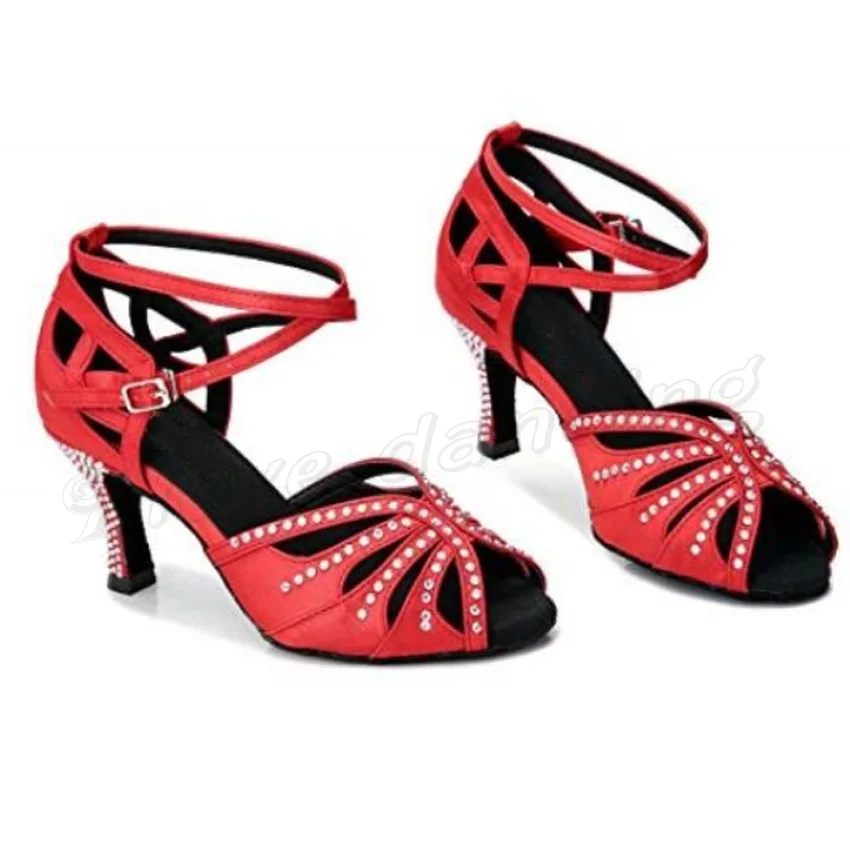 It is better to apply natural products based on beeswax to ballroom dancing shoes.
It is better to apply natural products based on beeswax to ballroom dancing shoes.
▪ A more complicated procedure is to track men's ballroom shoes in nubuck or natural suede . To clean these shoes, you can not take water, it will contribute to the appearance of new stains! These materials are cleaned only when dried. Before the main cleaning, you need to work with shoes with a brush with rubber inserts for suede leather (as they are called). But you can also use the folk way - with a wash (eraser) and toothpowder!
▪ Care must be taken when caring for patent ballroom shoes , as any (even the smallest) scratch on the varnish surface will be noticeable and may continue to grow over time! Only purchased shoes with a patent leather top can only be wiped with a flannel cloth. But when it becomes necessary to clean them, it is more advisable to use a soft sponge or cloth with soapy water. You can also use specialized products based on balms and natural oils.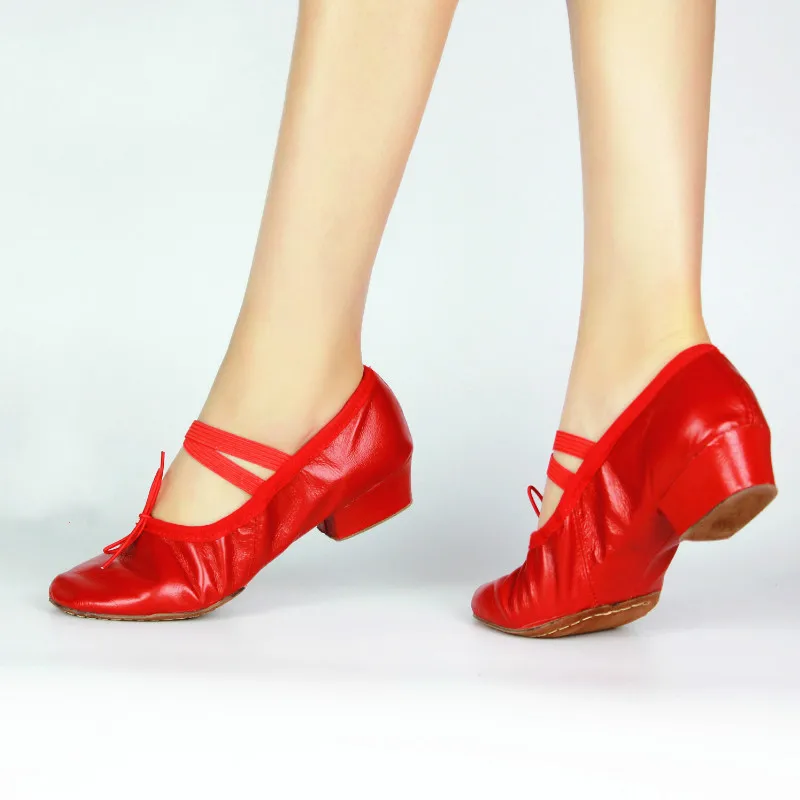
▪ A very important element of shoe maintenance is the sole care. It is made of specially selected leather - suede and has a fleecy structure. The condition of the sole directly affects your stability and at the same time the correct glide on parquet or laminate. The condition of the soles gives 70% of the influence on the grip of shoes with the floor, while the quality of the parquet only affects the remaining 30%.
It is necessary to rub and clean the soles of the shoes with a special brush with a hard metal bristle before each exit to the floor or training in order to again roughen the polished leather. To keep the brush itself neat, you can put on an old stocking before use. But most brushes are now varnished and everything superfluous is easily chipped from them.
Almost always, dancers moisten the soles of their shoes with water before dancing, but this is only a short-term remedy, and rather harmful to the shoes themselves. It is better to use a special tool for the same purpose - anti-slip, but not castor oil - shoes deteriorate from it and are very poorly repaired.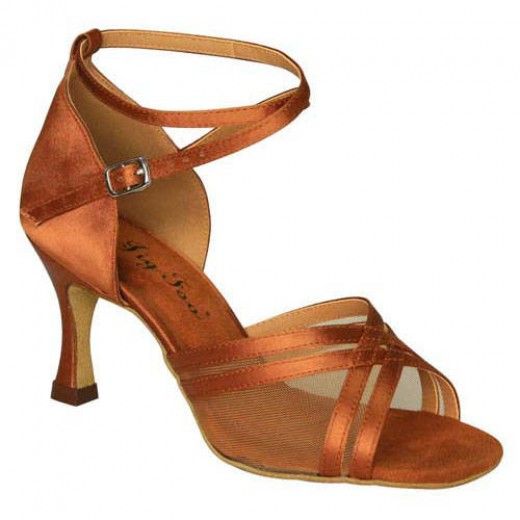
There are dancers who apply hairspray on the soles, this method can give a short-term effect, but after the varnish dries, it becomes even worse. After that, it is almost impossible to clean the sole from the varnish.
▪ There is a universal recipe for sole cleaning that is well known to riders - water displacer WD-40. This method will undoubtedly help to clean the sole from paraffin, fat and disinfect it. However, often the use of this tool is generally useless, because absolutely fat-free skin is also not the best option. Some time ago, a special powder came into the market, which helps to achieve the required slip in the parquet, but it is quite expensive and does not always give the desired result. In general, try, experiment and you will have a non-slip parquet.
▪ Change heel heels or - concerns mainly partners.
It is more correct to buy a spare pair of heels at once during the purchase of new shoes. Heels need to be replaced, in no way allowing them to completely wear out. Changing heels is a fairly elementary task that can be handled by anyone with proper arms growth, not just legs. In order to replace the old heel, you need to fix it with pliers and pull it out. Then insert a new one, so that the metal pin that is on the heel goes deep into the heel in the right direction, and then drive the heel inside with a hammer. But it is better to contact a shoe repairman, without experience you can ruin everything.
Changing heels is a fairly elementary task that can be handled by anyone with proper arms growth, not just legs. In order to replace the old heel, you need to fix it with pliers and pull it out. Then insert a new one, so that the metal pin that is on the heel goes deep into the heel in the right direction, and then drive the heel inside with a hammer. But it is better to contact a shoe repairman, without experience you can ruin everything.
Insole care. Most insoles are made of artificial materials or a combination of artificial and natural materials, but there are also insoles made of real leather, for example, Galex uses only natural leather. As the experience of training shows, it is definitely impossible to choose what is better, each species needs to be looked after in its own way. Artificial materials can be less frequently and less labor-intensively looked after, but by no means should be ignored, but for natural leather, due to increased comfort, more frequent and demanding care has to be sacrificed.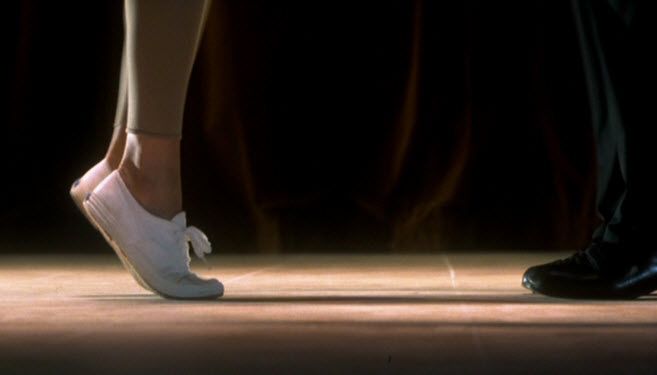
And it is highly recommended to use a germ-killing powder. If you do not worry about the condition of the insole, the microbial environment will grow, become a breeding ground for germs, and, ultimately, this can cause the shoe to lose its internal shape and cause a very unpleasant smell. It is very important that there is some adhesion between the sole of the foot and the insoles (no sticking of the black and wet insole to the foot).
Shoe shape. If the ballroom dance shoes do not support the arch of the foot, these shoes are not suitable for dancers. A suitable shape and shoe last can only be selected by measuring it. Also pay attention to the shape of the sock in women's Latin - square or oval. The first is suitable for feet with the longest thumb, and the second with a longer index or middle.
How to clean ballroom shoes
Shoe shape (read more...)
First of all, you need to take care not of shoes, but of your own skin of the legs and feet. It is necessary to take care of the feet, and recently appeared, special orthopedic insoles, invented specifically for ballroom dancing, will help to keep the shape of the feet as long as possible. A special powder, also invented specifically for dancers, will kill bacteria that spread infection and bad odors, and help prevent excessive sweating..
It is necessary to take care of the feet, and recently appeared, special orthopedic insoles, invented specifically for ballroom dancing, will help to keep the shape of the feet as long as possible. A special powder, also invented specifically for dancers, will kill bacteria that spread infection and bad odors, and help prevent excessive sweating..
How to take care of ballroom dance shoes
4. Lately it has become popular again to dye shoes in the color of the costume - this can be done both in the salon and on your own, choosing the right tone. How to clean ball shoes
Wash your feet (read more...)
Leather shoes should be washed quickly and in cool water so that the temperature does not affect the adhesive joints. But synthetic ones can be soaked in a soapy solution for an hour or even run in a washing machine in a delicate mode with warm water.
How to take care of your climbing shoes: Evolv's advice
Climbing shoes don't need much maintenance, so don't be lazy and skip the simple tips in this article.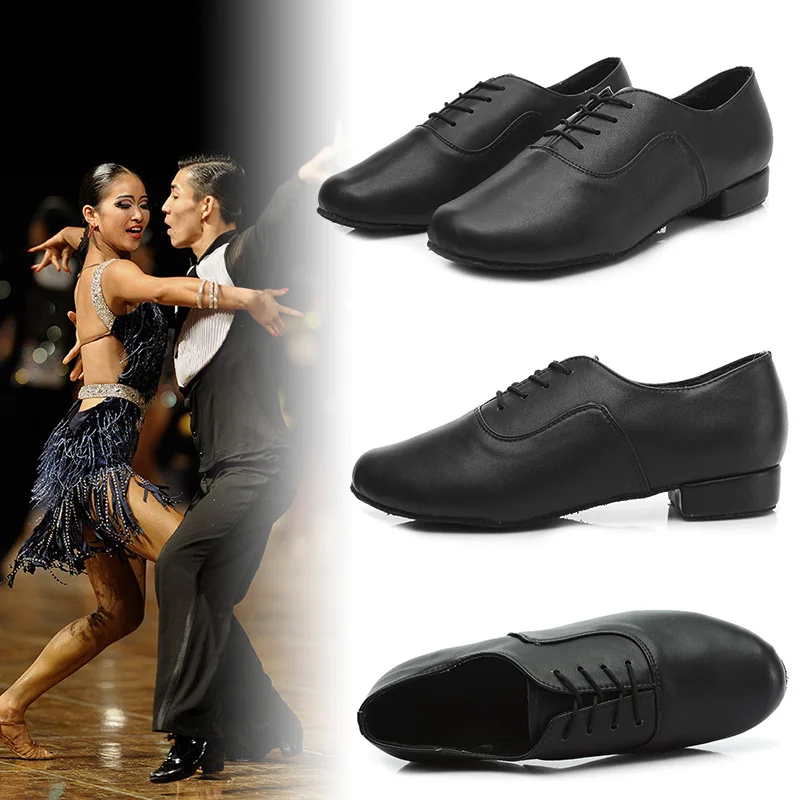 Yes, yes, at first you think “Oh, yes, it will do!”, And then you catch sidelong glances at the climbing wall in the direction of your very bad-smelling climbing shoes 🙂 But this can be avoided, or at least reduce the scale of the disaster. Key points: keep climbing shoes away from heat sources, do not use harsh chemicals and store in a dry place. And then in order. How to clean ballroom shoes
Yes, yes, at first you think “Oh, yes, it will do!”, And then you catch sidelong glances at the climbing wall in the direction of your very bad-smelling climbing shoes 🙂 But this can be avoided, or at least reduce the scale of the disaster. Key points: keep climbing shoes away from heat sources, do not use harsh chemicals and store in a dry place. And then in order. How to clean ballroom shoes
Oriental dance (read more...)
Oriental dance or belly dance is mostly performed without shoes. But you can also use Czech shoes or ballet flats, as in ballet dances. Such shoes can be decorated with embroidery, beads, rhinestones or other decorative items.
How to choose the right shoes for dancing
In addition, dance shoes usually have an additional insole to absorb moisture, and this will provide you with more comfort. While some ordinary shoes can be comfortable and stylish, they can easily lead to injury.